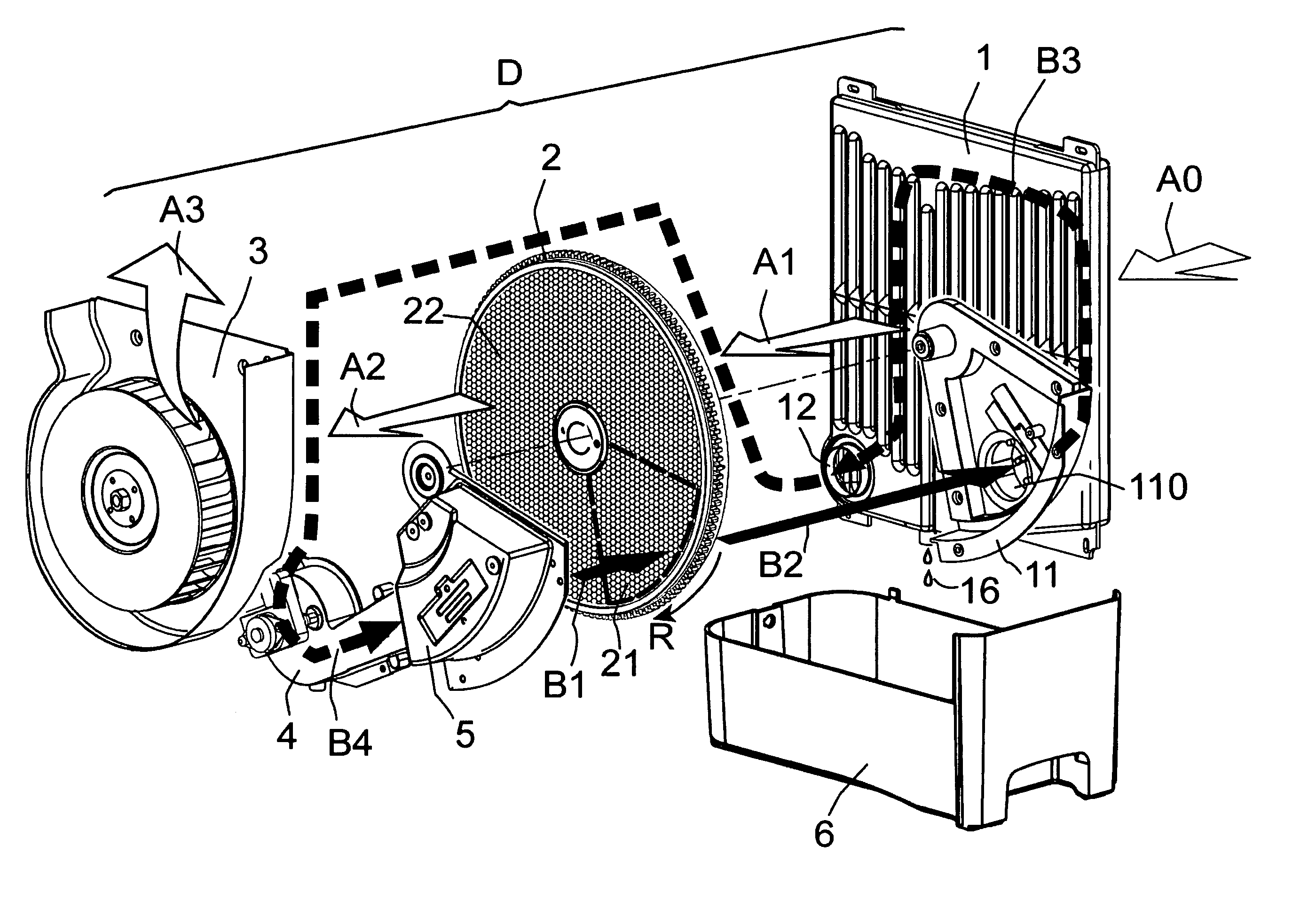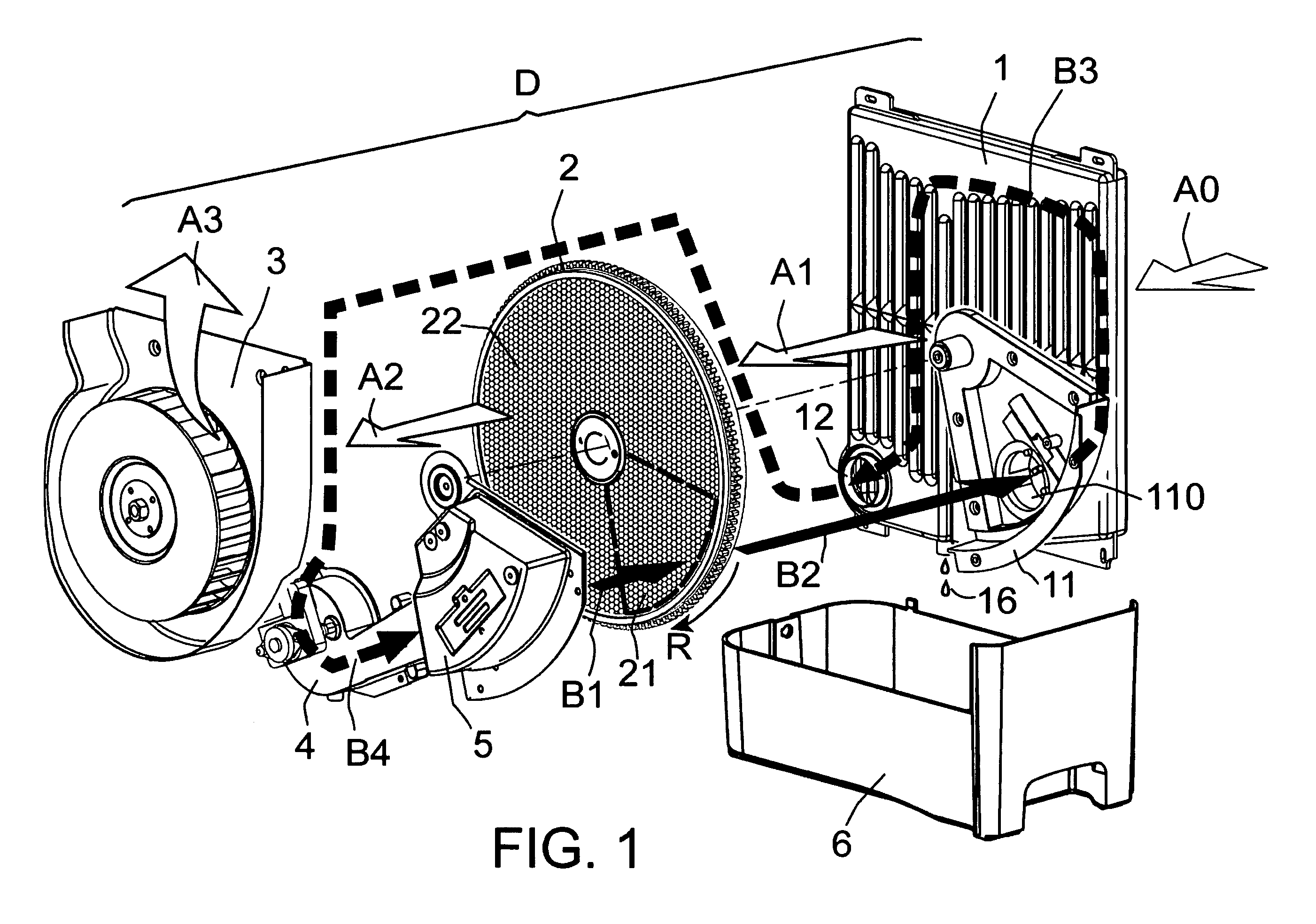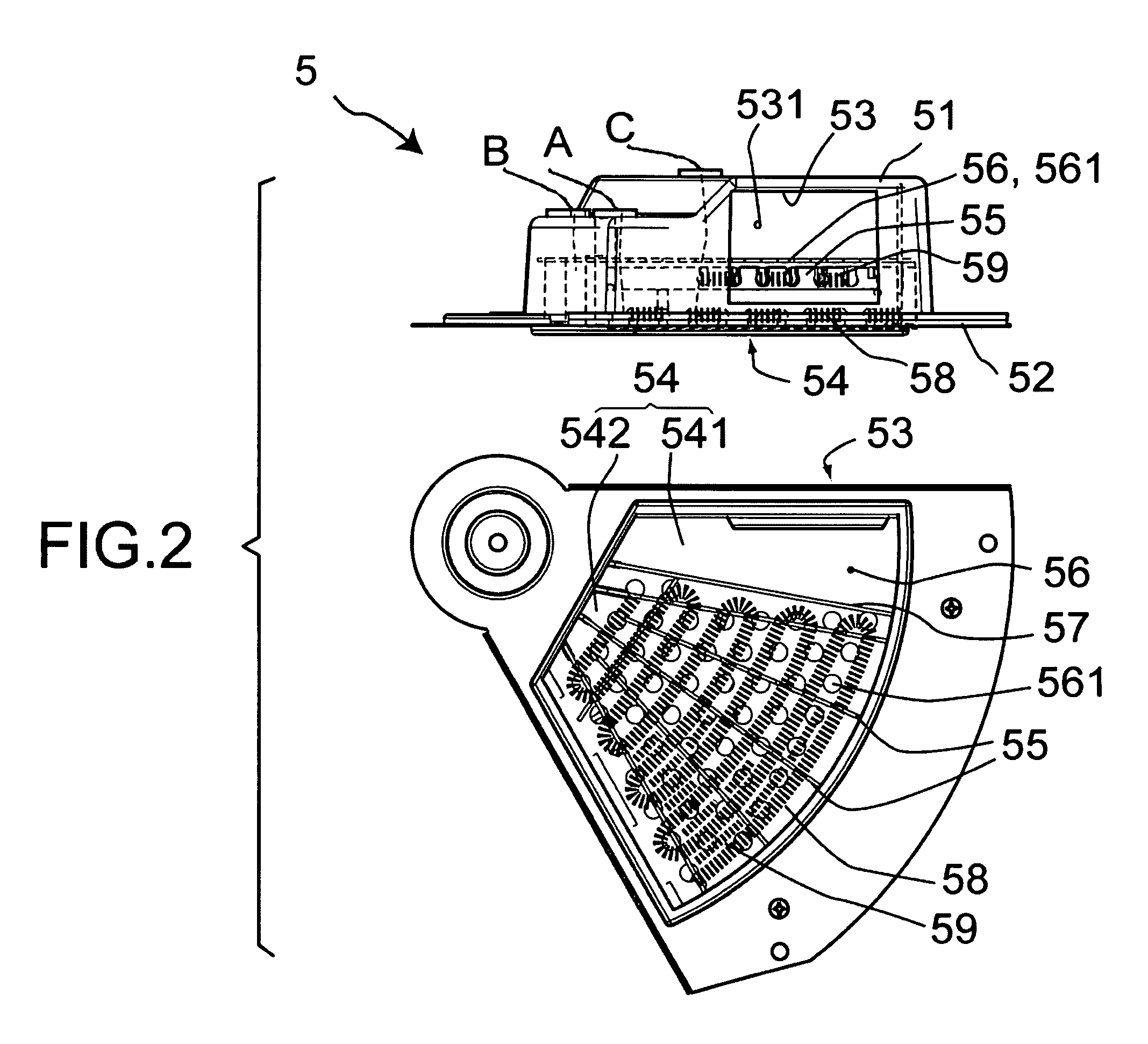Heater device for desiccant rotor dehumidifier
a desiccant rotor dehumidifier and heating element technology, which is applied in the direction of air heaters, lighting and heating apparatus, heating types, etc., can solve the problems of uncontrollable airflow through the heating element, complex assembly, and high cost, so as to prevent thermal loss, simple construction, and uniform airflow output
- Summary
- Abstract
- Description
- Claims
- Application Information
AI Technical Summary
Benefits of technology
Problems solved by technology
Method used
Image
Examples
Embodiment Construction
[0014]FIG. 2 is an orthographical view of a heater device of an embodiment of the invention taken from air inlet and air outlet directions. The heater device 5 is composed of a box 51 and a cover 52, which are preferably made of metal for fire retardancy. The box 51 is formed with an air inlet 53 connecting to the airflow provided by the second fan 4 (FIG. 1). The cover 52 is formed with an air outlet 54 connecting to the regeneration region 21 of the desiccant rotor 2 (FIG. 1). The box 51 and the cover 52 form a cavity for holding a supporter 55 composed of thermal insulative material (such as mica) components to support heating elements (such as two heating wires 58, 59) at a position adjacent to the air outlet 54. An insulative plate 56 fixed in parallel to the heating elements 58, 59 and parts the heating elements and the air inlet 53. The insulative plate 56 is formed with a plurality of via holes 561 suitably distributed for the airflow coming from the air inlet 53, and throug...
PUM
 Login to View More
Login to View More Abstract
Description
Claims
Application Information
 Login to View More
Login to View More - R&D
- Intellectual Property
- Life Sciences
- Materials
- Tech Scout
- Unparalleled Data Quality
- Higher Quality Content
- 60% Fewer Hallucinations
Browse by: Latest US Patents, China's latest patents, Technical Efficacy Thesaurus, Application Domain, Technology Topic, Popular Technical Reports.
© 2025 PatSnap. All rights reserved.Legal|Privacy policy|Modern Slavery Act Transparency Statement|Sitemap|About US| Contact US: help@patsnap.com



